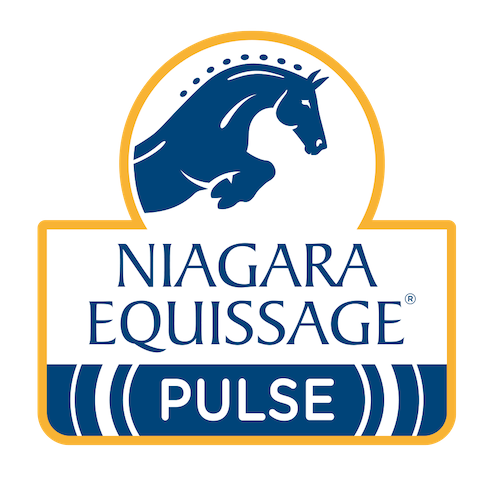Performance & Health Benefits
Injury Recovery / Rehab
Using Niagara Equissage speeds recovery from injuries and medical conditions, and promotes an overall healing condition in horses. The system is particularly beneficial for treating horses with:
Rhabdomyolysis
Equine Rhabdomyolysis Syndrome (ERS) is a metabolic disorder that is linked to glycogen accumulation during rest. Read more
Laminitis
By definition laminitis in horses is the failure of the attachment between the distal phalanx (coffin bone) and the inner hoof wall. Read more
Lympangitis
Lymphangitis in horses is an inflammation and/or swelling associated with impairment of the lymphatic system, particularly in a limb. Read more
Pedal Osteitis
Pedal Osteitis is inflammation of the distal phalanx (pedal bone). Read more
Horse Abcesses
An abscess is a cavity containing pus, which is a collection of dead cells, bacteria, and other debris resulting from an infection. Read more
Horse Wounds / Cuts
There are many different types of horse cuts and wounds. For example trauma can cause puncture, avulsion (flap of skin), incised, lacerated, abrasion or shear wounds. Read more
Horse Arthritis
Arthritis is a condition involving inflammation of a joint, usually accompanied by pain, swelling, and stiffness. Read more
Bursal Strains & Injuries
A bursal is an isolated fluid-filled sac. Some occur naturally at potential pressure points (e.g. point of hock) whereas others are acquired due to repetitive low grade trauma. Read more
Capped Hock / Elbow / Knee
Capped hock, elbows and knees are all bursal injuries and result from a direct trauma to the area. Read more
Filled Legs
A diffusely enlarged leg below the knee or hock. Read more
Ligament / Tendon Strain
Tendons and ligaments are dense bands of fibrous tissue composed mainly of collagen. Tendons connect muscle to bone, while ligaments connect bone to bone. Read more
Locking Patella
The system of muscles, tendons and ligaments that allow the horse to ‘lock’ its lower leg joints with little muscular effort are known as the ‘stay apparatus'. Read more
Horse Sore Back
A sore back in a horse can be caused by numerous factors. Read more
Splint In Horses
A ‘true’ splint in horses occurs when the interosseous ligament becomes damaged, leading to soft tissue inflammation and lameness. Read more

Testimonials
See All- Kentucky Derby Winning Trainer & Trainer of Horse of the Year, Zenyatta
"My Niagara Equissage is in use 4 hours every morning treating many horses for many things, including ALL horses racing that day. I find using the Niagara Equissage on tendons and suspensors removes soreness totally."
- "I like the way the Niagara Equissage relaxes the horses. It helps with sore muscles and the horses recuperation after hard races. I can see a difference."
- Myerscough Racing, Ireland
After spending time working in many top yards around the globe, I have found Brandes Formula to be best product I have ever come across to bring a horse back to full health! Any horses that are not thriving seem to improve almost immediately from being put on this stuff. It clears out any mucus in their lungs, and after racing, the amount of time it takes for my horses to recover has halved and recuperation time after racing is minimized. My horses now look great and I would have no problem in recommending this product to anyone.

